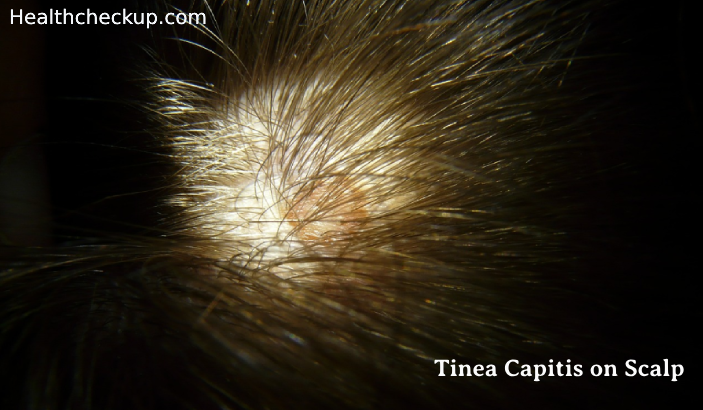Tinea capitis, commonly known as scalp ringworm, is a contagious fungal infection that affects the scalp, hair shafts, and surrounding skin. It is caused by dermatophyte fungi, which thrive in warm and humid environments. This infection primarily affects children, but it can also occur in adults. Understanding the causes, symptoms, and treatment options for tinea capitis is crucial for effective management and prevention.
Causes of Tinea Capitis
Tinea capitis is caused by dermatophyte fungi belonging to the genera Trichophyton and Microsporum. These fungi infect the keratinized tissues of the scalp and hair, leading to the characteristic symptoms of the infection. The primary species responsible for tinea capitis include:
- Trichophyton tonsurans: This is the most common cause of tinea capitis in the United States. It primarily spreads through human-to-human contact.
- Microsporum canis: Often transmitted from animals to humans, particularly from cats and dogs. This species is more prevalent in Europe and other parts of the world.
- Trichophyton violaceum: Common in Africa and parts of the Middle East, this species also spreads through human-to-human contact.
Transmission
This scalp infection is highly contagious and can spread through:
- Direct Contact: Skin-to-skin contact with an infected person.
- Indirect Contact: Sharing personal items such as combs, brushes, hats, towels, and bedding.
- Animal Contact: Handling infected pets, particularly cats and dogs, can transmit the fungi.
- Environmental Contamination: Fungal spores can survive on surfaces and objects, leading to infection when individuals come into contact with contaminated items.
Symptoms of Tinea Capitis
The symptoms of this infection can vary depending on the type of fungus involved and the individual’s immune response. Common symptoms include:
- Scalp Itching: Persistent itching of the scalp is a common early symptom.
- Red or Gray Patches: The infection often presents as round, scaly, red or gray patches on the scalp.
- Hair Loss: Affected areas experience hair loss, leading to bald patches. The hair breaks off at the scalp, leaving short stubs.
- Black Dots: In some cases, broken hair shafts appear as black dots on the scalp.
- Kerion: A severe inflammatory reaction resulting in painful, swollen, pus-filled lesions. Kerion can lead to permanent scarring and hair loss if not treated promptly.
- Scaling and Flaking: The scalp develops scales and flakes, resembling dandruff.
Diagnosis of Tinea Capitis
Diagnosing tinea capitis involves a combination of clinical examination and laboratory tests:
- Clinical Examination: A healthcare provider examines the scalp and hair for characteristic signs of infection.
- Wood’s Lamp Examination: Certain species of fungi fluoresce under ultraviolet light, aiding in the diagnosis.
- Microscopic Examination: Skin scrapings and plucked hairs can be examined under a microscope to identify fungal elements.
- Fungal Culture: Culturing the fungus from scalp scrapings or hair samples can confirm the diagnosis and identify the specific species responsible for the infection.
Treatment of Tinea Capitis
Effective treatment of tinea capitis requires systemic antifungal medications, as topical treatments alone are usually insufficient due to the infection’s penetration into the hair shafts. Common treatment options include:
- Oral Antifungal Medications:
- Griseofulvin: Traditionally the drug of choice for tinea capitis. It is taken for 6-8 weeks.
- Terbinafine: An alternative to griseofulvin, typically taken for 4-6 weeks.
- Itraconazole: Another option, especially for infections caused by Trichophyton species.
- Fluconazole: Sometimes used for its effectiveness against various dermatophytes.
- Topical Treatments:
- Antifungal Shampoos: Adjunctive treatment with shampoos containing ketoconazole or selenium sulfide can help reduce fungal spores on the scalp and prevent spread.
- Kerion Management: Severe cases involving kerion require additional treatments, such as corticosteroids to reduce inflammation and prevent scarring.
Prevention of Tinea Capitis
Preventing the spread of tinea capitis involves several strategies:
- Personal Hygiene: Regular hair washing and maintaining good scalp hygiene can help prevent fungal infections.
- Avoid Sharing Personal Items: Do not share combs, brushes, hats, towels, or bedding with others.
- Treat Infected Pets: Ensure pets with fungal infections receive veterinary treatment to prevent transmission to humans.
- Environmental Cleaning: Clean and disinfect items and surfaces that come into contact with the fungus.
- Educate Children: Teach children about the importance of not sharing personal items and maintaining good hygiene practices.
Complications of Tinea Capitis
While it is generally treatable, complications can arise if the infection is not addressed promptly:
- Permanent Hair Loss: Severe or untreated infections can lead to scarring and permanent hair loss.
- Secondary Bacterial Infections: Scratching the itchy scalp can introduce bacteria, leading to secondary infections.
- Kerion: This inflammatory reaction can cause significant discomfort and permanent scarring if not treated effectively.
Tinea capitis is a common fungal infection of the scalp that primarily affects children but can occur in adults as well. Prompt diagnosis and treatment with systemic antifungal medications are crucial to prevent complications and ensure complete recovery. Maintaining good personal hygiene, avoiding sharing personal items, and treating infected pets are key strategies in preventing the spread of tinea capitis.
I specialize in writing about health, medical conditions, and healthcare, drawing extensively from scientific research. Over the course of my career, I have published widely on topics related to health, medicine, and education. My work has appeared in leading blogs and editorial columns.









